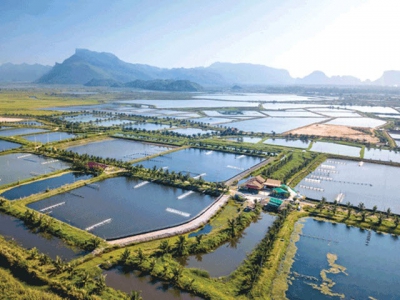Land Based Sustainable Aquaculture Strategy - Part 1

Summary
Aquaculture is one of the fastest-growing industries in the world. Already 50% of seafood consumed worldwide is produced through aquaculture.
According to the United Nations’ Food and Agriculture Organization it is estimated that at least an additional 40 million tonnes of aquatic food will be required by 2030 to maintain the current per capita consumption. New South Wales is poised to capture a significant proportion of this projectedgrowth.
New South Wales has large areas suitable for the development of land based aquaculture with access to high quality surface water, ground water, estuarine and marine waters.
Aquaculture industry participants and the NSW Government’s regulatory agencies are very conscious of the need to ensure that the development of the aquaculture industry in New South Wales proceeds in a manner that does not jeopardise its ecological sustainability.
1/ What is land based aquaculture?
Aquaculture means the breeding, growing, keeping and harvesting of fish or marine vegetation with a view to sale or commercial purpose. The NSW LBSAS uses the definition of aquaculture given in the Fisheries Management Act 1994.
The NSW LBSAS covers the following types of land based aquaculture which may be used to produce fish for food, fish stocking and the ornamental trade, namely:
- Pond aquaculture systems using estuarine, marine, saline groundwater or fresh water for growing species.
- Tank aquaculture systems using estuarine, marine, saline groundwater or fresh water for growing species.
Critical success factors
Some critical factors to consider and resolve when deciding whether an aquaculture venture may be feasible include:
- Water – access to abundant good quality water;
- Land – predominantly freehold land that is zoned appropriately (Crown land may be used for pipelines or other services) and free of constraints to the proposed development;
- Stock – reliable access (numbers and time of year) to juveniles of your selected fish species;
- Feed – access to quality feed that ensures the physiological requirements of your selected fish species;
- Markets – access to established markets or the ability to establish new markets;
- Finance – initial finance required for total capital expenditure plus 2 years operating expenses;
- Profitability – development of a sound business plan.
Strategy purpose and vision
The purpose of the NSW LBSAS is to detail best practice guidelines which promote ecologically sustainable development (ESD) of the land based aquaculture industry in NSW. It aims to simplify the approvals process giving greater certainty to investors and the community.
The vision for the land based aquaculture industry in NSW is for a thriving, economically and environmentally sustainable industry.
2/ The Aquaculture Industry Development Plan
What is the AIDP?
The Aquaculture Industry Development Plan (AIDP) is one of the two components of the NSW LBSAS. It provides a best practice approach to environmental management that aims to attract investment and employment in economically and environmentally sustainable land based aquaculture by:
- reinforcing within the aquaculture industry environmentally sustainable practices and a duty of care for the environment in which the industry is located;
- ensuring environmental factors are considered during site selection for new aquaculture enterprises;
- ensuring environmental factors are considered during the planning, design and operation of all aquaculture enterprises;
- providing the technical basis for the efficient and effective regulation of the industry with up-front certainty to applicants, the community and decision makers as to the appropriate environmental performance of aquaculture businesses.
Current industry operators and new investors are expected to meet the environmental performance objectives. Further, there is an expectation of continuous improvement in environmental performance. In practice this means the encouragement of approaches which provide outcomes above those outlined in the AIDP (best practice at the time of developing this publication).
Related news
 Britain's prawn farming pioneers
Britain's prawn farming pioneers Dougie Allen, a co-founder of Great British Prawns, explains what inspired him to establish the UK’s first and only clearwater – as opposed to biofloc-based
 Seafood exports reached nearly 4 billion USD in the first six months
Seafood exports reached nearly 4 billion USD in the first six months Vietnam exported $4 billion worth of seafood in the first six months of 2019, equally to 100.6% as compared to the same period last year
 Canada's aquaculture ventures fail to meet sustainability goals
Canada's aquaculture ventures fail to meet sustainability goals There is virtually no evidence to support decades-long narratives about the sustainability of finfish aquaculture in Canada.